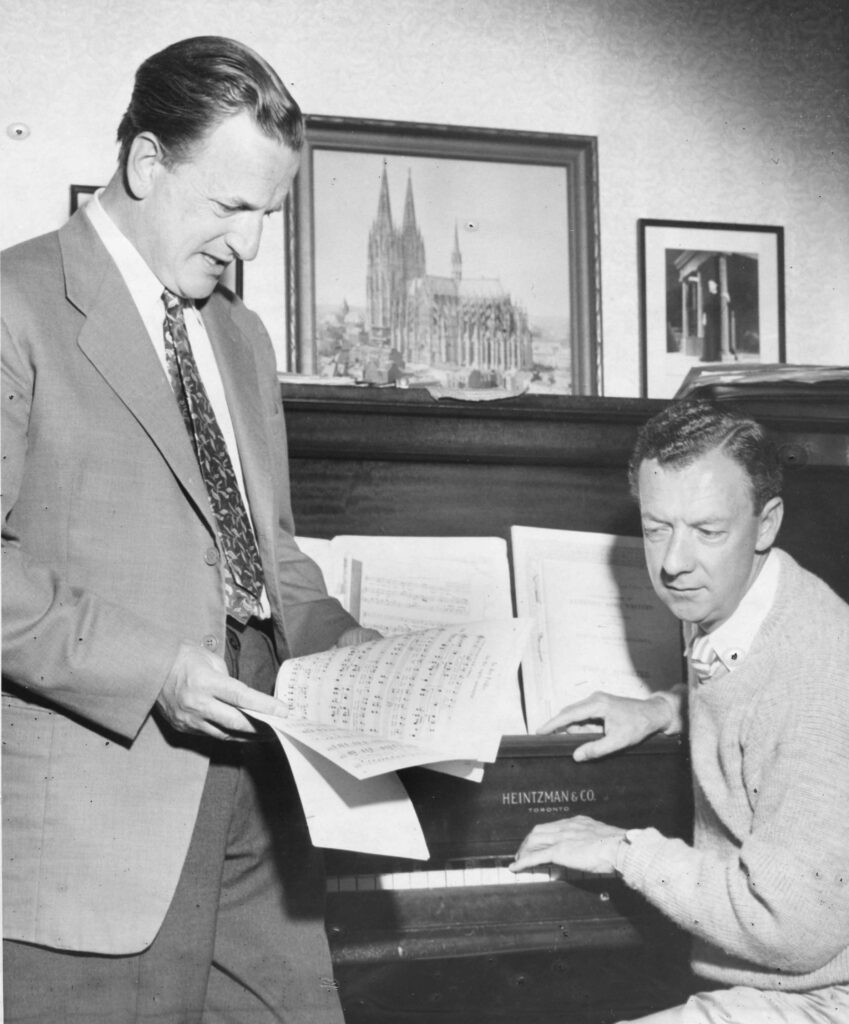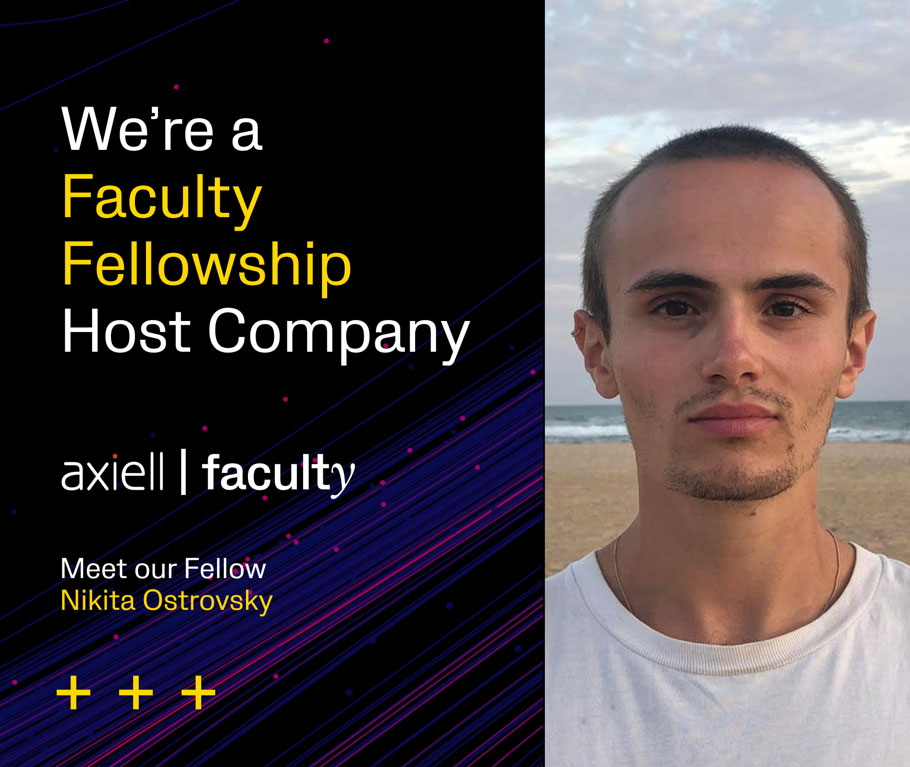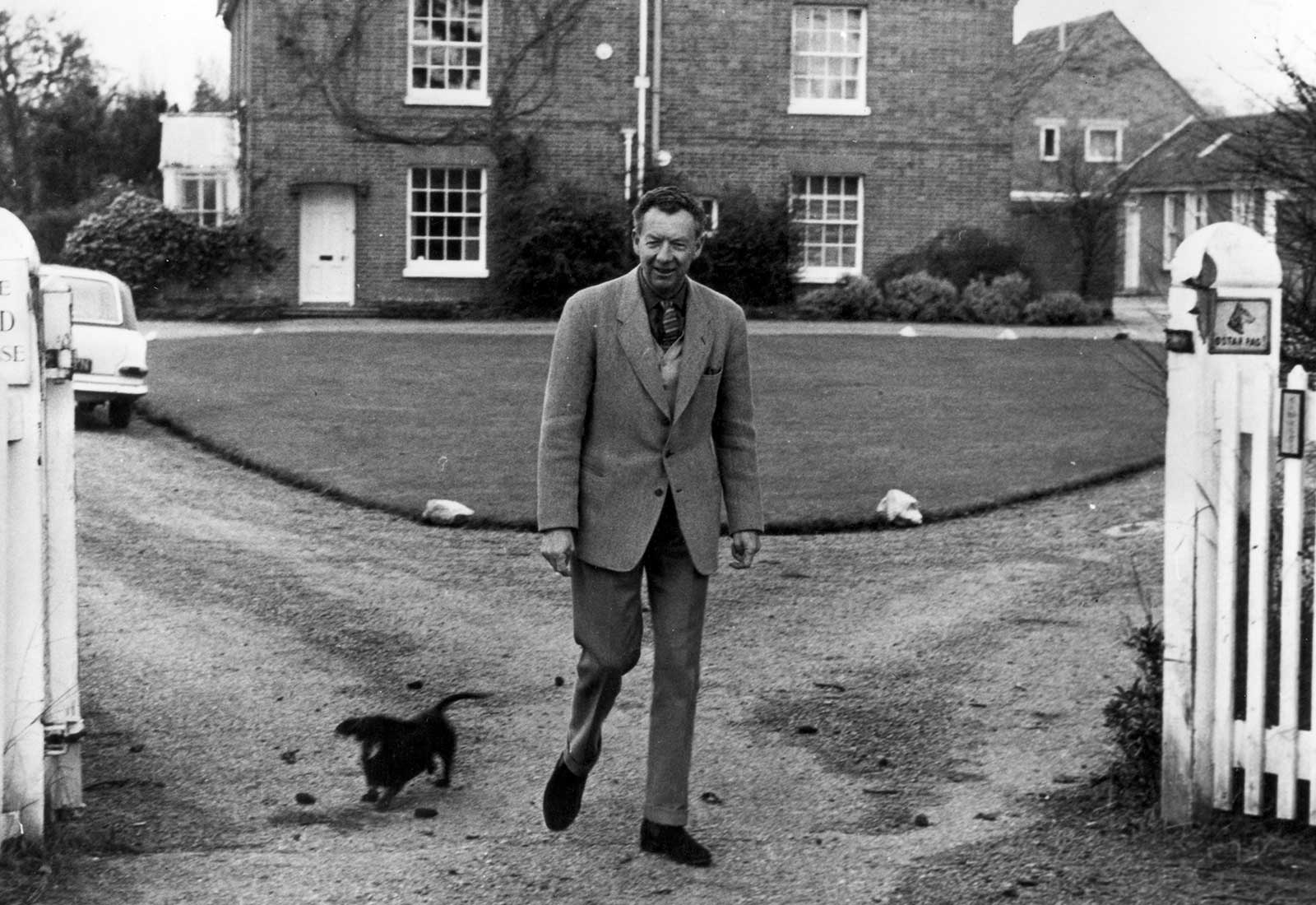Uncovering Hidden Truths Behind One of Britain’s Greatest Composers
The Britten Pears Arts archive houses a vast variety of material, including scores, designs, diaries and over 20,000 files of correspondence, relating to one of Britain’s greatest composers of the 20th century, Benjamin Britten. The archive is tasked with uncovering and sharing stories about Britten’s professional and personal activities. Who was he, who did he surround himself with, and how did he come to achieve such success?


On the question of who Britten surrounded himself with, a recent project uncovered an illuminating list of individuals in Britten’s orbit which may help answer who he was and how he came to be one of Britain’s greatest ever composers. 130,000 influential entities surrounding Britten’s life were uncovered in an experimental AI project completed in collaboration with the archive’s software vendor, Axiell, a group of partner archives, and AI incubator, Faculty.
Read on to discover how AI uncovered women with unrecognized contributions to his work, reshaped the archive’s understanding of Britten’s life, and forged new digital opportunities for the heritage sector.
Envisioning an AI Archive
At Axiell’s User Conference in 2022, the company’s CTO, Dave Thomas, spoke about the role of innovative technology strategies at museums and archives. “Museums and archives are information rich. On top of this, born-digital material is produced every day. Current practices for classifying information and sharing content can’t keep up with new material, let alone the sizable backlogs of physical material to be digitized.”

“When transformative digital capabilities like AI come along, we see a solution that can help our customers achieve their goals. AI can augment how our customers curate such a large volume of information and then make connections to entities beyond their institution. It also offers new ways for audiences to engage with the collections stories and uncover truths about the history.”
As a leading museum technology vendor, Axiell is tasked with providing innovative software that enables and sustains the work of its customer institutions. This involves listening to the community and engineering solutions in equal parts.
Dave is pioneering this at Axiell through his extensive network of thought and technology leaders. One such leader is Faculty, a data science incubator based in London England. In October 2022 Axiell partnered with Faculty to explore the potential applications of AI for museums and archives.
Prior to this, Christopher Hilton, Head of Archive and Library at the Britten Pears Arts archive approached Dave with his vision for the use of AI in archives.
Christopher’s vision: determine if AI can help isolate entities within archival records, and then identify which of those entities exists in another institution’s collection.
In Christopher’s words: “There are goals within the archive community that are conceptually possible but logistically impractical because of the amount of manual labour that would be required. One such goal would be to list all the entities in each archive so that we may identify common entities across archives and be able to give a richer recount of history.”
Defining the Project
For this project, Axiell’s team were interested in understanding the social sphere surrounding the subject of the Britten-Pears archive, Benjamin Britten, one of Britain’s most significant composers, who was active during the mid-twentieth century.

Through his work at the Britten-Pears archive, Christopher was able to suggest collections that might reveal correspondence with Britten and the people and institutions around him. The Royal Opera House was an obvious choice because of Britten’s musical career; and the London School of Economics because of his political leanings.
Christopher says, “We wanted to explore, not just the ability for AI to extract information from one archive, but could it roam across repositories. Would it identify the same person across archives? I was able to make connections with other institutions within the Axiell community that might reveal synergies.”
Faculty and Data Science
Faculty is a technology consultant and incubator that runs a fellowship program for aspiring data scientists. Fellows are given a “host company” with whom to partner on exploratory projects. Nikita Ostrovsky was assigned to the project with Axiell.

In Nikita’s words: “I had just finished my physics masters from Oxford and was looking to learn more about data science and AI. Faculty takes people with technical foundations and puts them on a 6 week exploratory project, gives them a bunch of training, and lets them loose to discover. When I heard about the project with Axiell, I was immediately hooked. It was a match made in heaven.”
Together with Nikita, Christopher, and the three archives, Axiell had the resources to begin experimenting with AI for archives.
Establishing the Partnership
Excitement was high as the team began to structure the working relationship. Christopher recounts, “Since every archive database is different, especially when you’re working across different collections management systems as we were in this project, my job was to get the data from our collaborative partners, share it with Nikita, and then explain the concepts and how the databases worked so that we could mesh different systems together and understand how the archives were structured. I became the bridge.”
“Computers give us the ability to comb through and make sense of vast quantities of stories (data). This project meant working with 3 different archives, each with tens of thousands of records across different software, structured in different ways. From the outset it felt important to find an approach that would work across the board with each archive, product and data structure so that we could generalize the work after the project for sustainability and further innovation,” says Nikita.
The Outcome
After the 6-week sprint, AI revealed significant connections between collections entities. Patterns surfaced that demonstrate the social sphere surrounding Britten, and all the entities with which he interacted. Moreover, Nikita was able to visualize the connections between the entities in a multidimensional model that illustrates the breadth and strength of these relationships.

“This is a triumph both for the future of archiving, but also for democratizing our archives and expanding our understanding of history. In Nikita’s visualization model, lines between entities demonstrate their connection. The thicker the line, the higher the frequency of mentions and connections we found in each of the archives. This democratizes access to the archive. All of a sudden, members of the public can see who the important people are – you don’t just have to trust the archivists or their biases,” Christopher says.
“Furthermore, new patterns are surfacing that identify people who were involved in Britten’s artistic milieu but who may not be directly connected or credited for their contribution. An example being some women who, at the time, weren’t considered creators, but who appear as connectors between people, places, and events surrounding Britten’s work. These women were forced into the background of history but were important contributors to Britten’s process and impact on history.”
The Biggest Challenge
Surely work this innovative also brought forth obstacles to overcome. When asked what was his biggest challenge, Nikita revealed, “We were tasked with building a machine that could disambiguate entities. As the software combs through archive material, we begin to see that entities we know are the same, are referenced in different ways.
For example, “Winston Churchill” may also be called “Winston”, “Churchill”, “Sir Winston Churchill”
When you pass a catalogue through the AI technology sometimes it can’t connect different references under one entity. This was a challenge at the heart of the project, and we’ve made a significant step in understanding how to resolve it.”
Future AI Possibilities
When asked where he would like to see data science use in the sector evolve, Christopher responded “I love the idea of automated cataloging. Given that we are working increasingly with digital material, we can now search the text of our archives. There may be ways that AI can generate catalogues automatically and produce catalog metadata with minimal human intervention. Then archivists might do less of the work of cataloging information and spend more time looking at what the AI has produced. There will always be a need for humans to do a bit of checking but if we get a leg up on the grunt work, we will be ahead.”
What’s Next?
The next step becomes more hypothetical. How can Axiell take this exploratory work, a proof of concept for AI within the culture sector, and bring it more widely to its intended users.
In the end, this experiment revealed 130,000 entities across the three archives, with strong and diverse connections between them.

Museums and archives are keepers and truth. These records provide a source of historical fact and it’s becoming increasingly important to preserve and facilitate connections between institutions for better historical storytelling and public access. So how can MuseTech vendors like Axiell use modern technologies to transform our shared history and storytelling?
Christopher recounts that a major ancillary learning from the project is understanding the importance of sitting down and dreaming for a little bit. “It’s very easy for us in the heritage sector to get overwhelmed dealing with the day to day. If you put just a little bit of thought in keeping up with evolving tech, there’s technology out there worth looking at.
Also, we had a 6-week boundary around this project that helped me understand the scope of investment. This made a huge difference in my mindset. I was able to conceptualize 6 weeks of explorative work and then understand I would be able to get back to “normal.”
I have no hesitation in recommending that other users get involved in something like this. Even if you think you’re incredibly busy it’s possible to fit this into the day.”
Interested in learning more about Axiell’s work with AI? Or want to get on the list for a future project? Get in touch with us!





